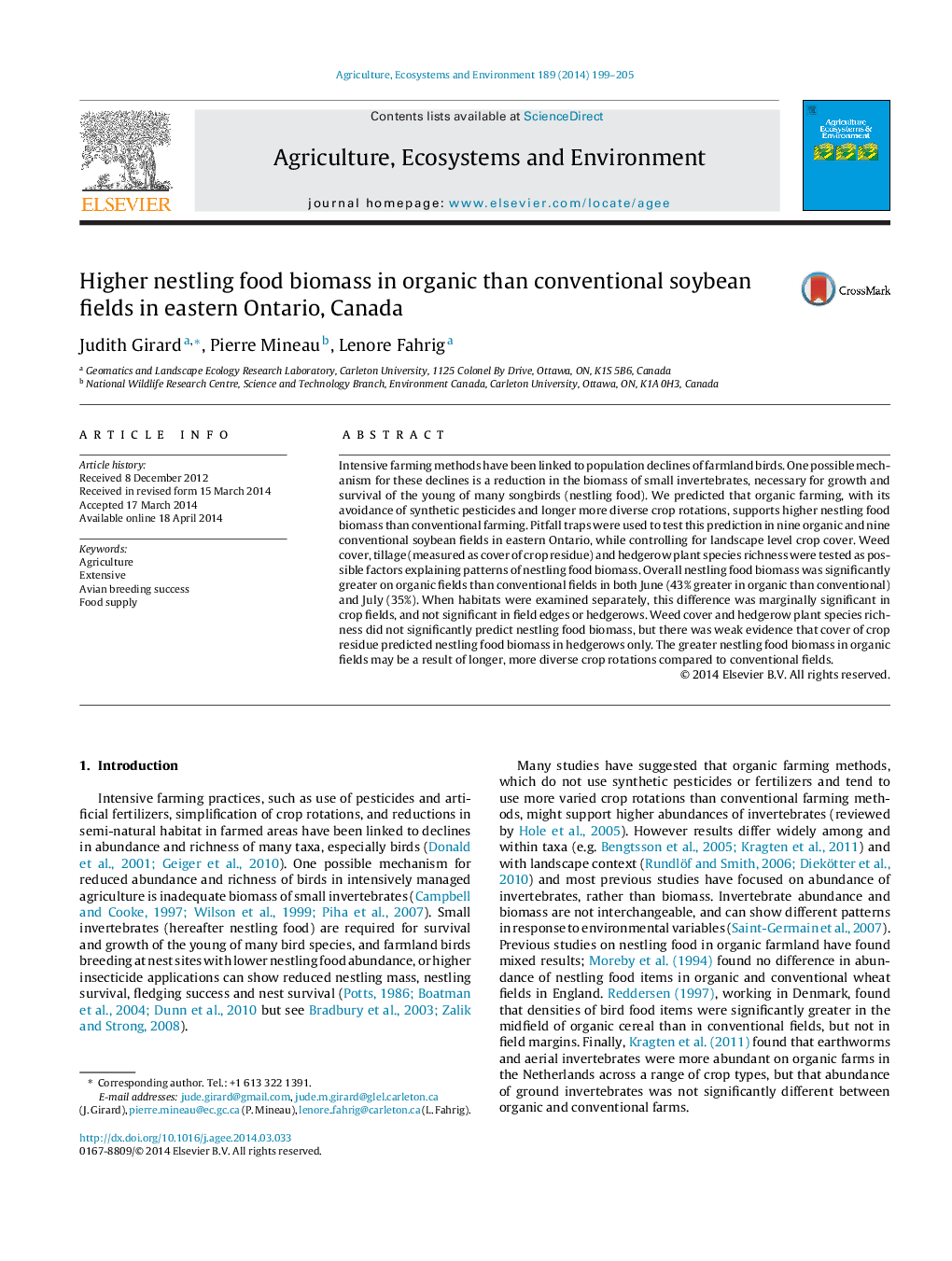| کد مقاله | کد نشریه | سال انتشار | مقاله انگلیسی | نسخه تمام متن |
|---|---|---|---|---|
| 2414055 | 1552063 | 2014 | 7 صفحه PDF | دانلود رایگان |
• Biomass of nestling food was compared between paired organic and conventional soybean fields.
• Nestling food biomass was higher in organic than conventional fields.
• Nestling food biomass was not explained by weed cover, tillage or plant richness.
Intensive farming methods have been linked to population declines of farmland birds. One possible mechanism for these declines is a reduction in the biomass of small invertebrates, necessary for growth and survival of the young of many songbirds (nestling food). We predicted that organic farming, with its avoidance of synthetic pesticides and longer more diverse crop rotations, supports higher nestling food biomass than conventional farming. Pitfall traps were used to test this prediction in nine organic and nine conventional soybean fields in eastern Ontario, while controlling for landscape level crop cover. Weed cover, tillage (measured as cover of crop residue) and hedgerow plant species richness were tested as possible factors explaining patterns of nestling food biomass. Overall nestling food biomass was significantly greater on organic fields than conventional fields in both June (43% greater in organic than conventional) and July (35%). When habitats were examined separately, this difference was marginally significant in crop fields, and not significant in field edges or hedgerows. Weed cover and hedgerow plant species richness did not significantly predict nestling food biomass, but there was weak evidence that cover of crop residue predicted nestling food biomass in hedgerows only. The greater nestling food biomass in organic fields may be a result of longer, more diverse crop rotations compared to conventional fields.
Journal: Agriculture, Ecosystems & Environment - Volume 189, 1 May 2014, Pages 199–205
